Our ninth action of marking unmarked sites of suffering is complete. This time, we visited sites in Mostar, Konjic, Sarajevo and Istočno Sarajevo.
We started in Sarajevo on a hot July afternoon, which made going to the site we had long planned to mark all the more arduous. Much has been said about Kazani, various initiatives have been launched and it’s probably safe to assume that what happened there is not unknown to most people. For us, the biggest problem was reaching the site. Fortunately, this action was joined by Adnan Hasanbegović.
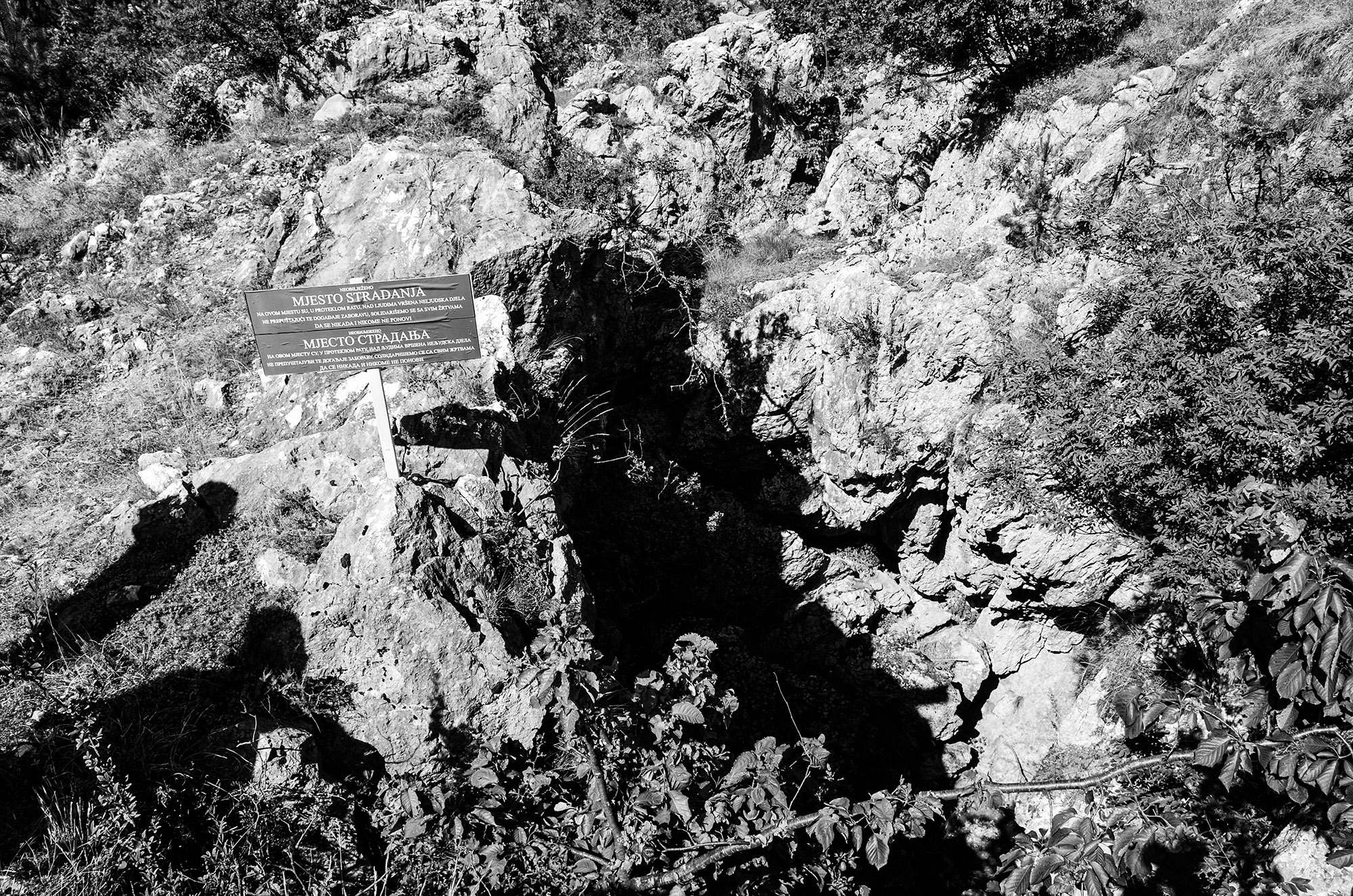
Still, hiking up to Kazani at the foot of Mount Trebević was no easy feat and after five or six wrong turns, surmounting a few hillocks and manoeuvring our car through the almost impossibly narrow mahala streets on Sarajevo’s periphery, we finally reached Boguševac, which was our starting point towards Kazani. With the car’s clutch plate smoking, we parked next to a house in Boguševac and having secured permission to leave the car there from its proprietor, we also got the standard Bosnian dose of political commentary. He said, “Kazani are overblown, I’ve been here the whole war, now they talk about it too much, but they did find 27 bodies.”
Kazani were the site where members of the ARBiH 10th Mountain Brigade brought mostly Sarajevo Serbs, to be executed there and their bodies dumped into the gorge. Although there had been initiatives to mark the site with an appropriate memorial, this is still an unmarked site of an atrocity. Speaking as both a peace activist and a war veteran who had been in the ARBiH 10th Mountain Brigade, Adnan shared his thoughts with us about the need to mark this site, which imbued this occasion with a particular solemnity. On our way down, we share the path with a group of young Canadian tourists who have no idea where they are and run across a stranger wearing a t-shirt bearing the sign “getting its history wrong is part of being a nation” printed by the Centre for Nonviolent Action a few years back. In my thoughts, I connect the writing on this man’s t-shirt with the man at the foot of the path to Kazani, who had been there the whole war and for whom Kazani are overblown.
The next site we marked was in the Big Park (Veliki park) in the very heart of Sarajevo. In May 1992, during fighting in Dobrinja, a group of at least eight JNA soldiers were taken prisoner, brought down to the Police Centre and executed in the park across the street. A trial for this crime is currently under way before the Court of BiH.
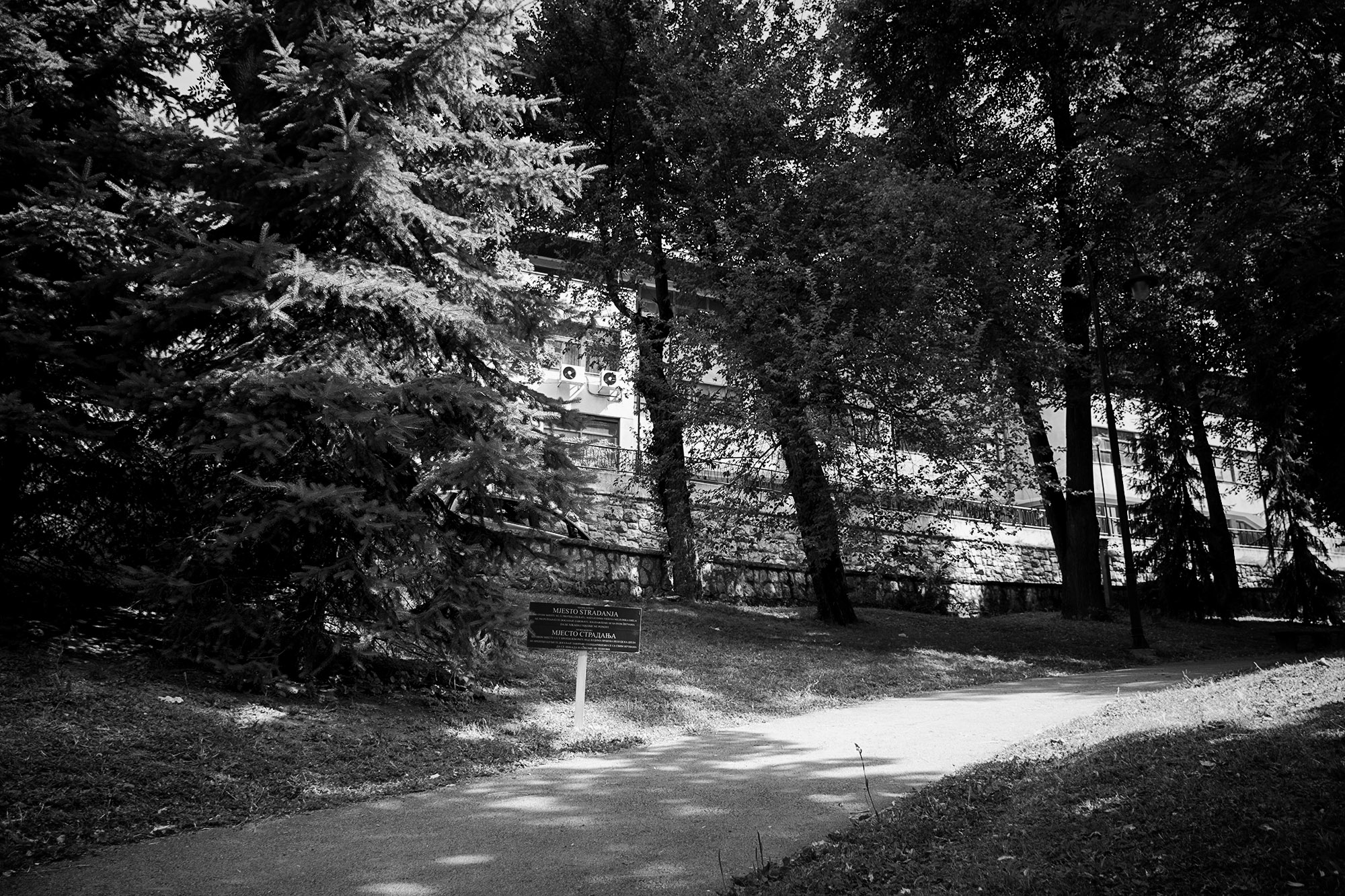
Across from the Sarajevo Airport, right on the inter-entity demarcation line in Dobrinja, is the Butmir Correctional Facility, better known as Kula, which in 1992-1995 served as a detention site for Bosniaks and Croats from the Sarajevo area. It is estimated that over 10 000 people passed through it. Currently, the building houses the women’s prison, so access is very restricted. We mark the site at the back, avoiding the video surveillance cameras monitoring the prison perimeter and then continue on towards Vogošća where we are to mark two more unmarked sites of suffering.
The “Kon Tiki” guest house, also known as “Sonja’s Guest House”, and the German WW2 bunker right behind it served as a detention site for Bosniaks and Croats from the Vogošća area. Once upon a time a favourite meeting place and guest house in the area, now it doesn’t even warrant a break in the full line down the middle of the road for a turning; instead, a traveller must cross the full line to reach the guest house. Hundreds of people were imprisoned at this site, and it became particularly notorious for how female prisoners were treated. Rape, sexual abuse, killings and beatings were a daily occurrence for the female prisoners. Although the horrors of these sites have mostly been brought to light, they still remain unmarked. There was even an initiative to turn them into a museum, but without the needed political will, they were left behind the full line.
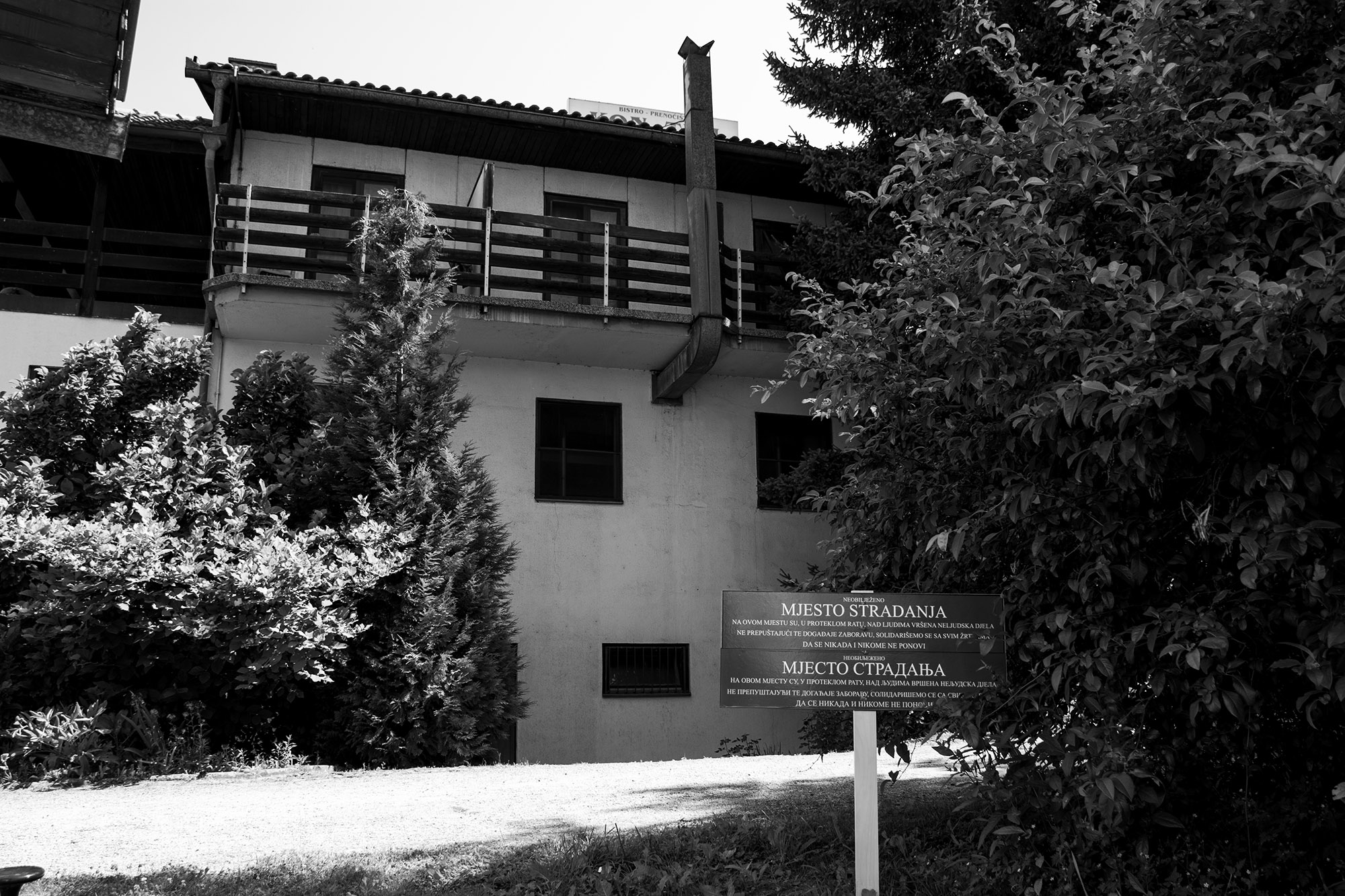
A City Divided Overnight
Mostar greets us with its summer heat, known locally as “ćelopek” (lit. head burn), but it suits us because in Mostar nobody is out and about at this time of day when it is so hot. Stanislav Krezić, an HVO veteran and prison camp survivor, today a peace activist, comes to lend us a hand with marking sites in Mostar.
During the conflict between HVO and ARBiH, the football stadium at Bijeli brijeg served as a concentration site for Bosniaks who found themselves in the territory controlled by HVO, today known as West Mostar. Across the street from the stadium is the Faculty of Mechanical Engineering where in 1993 and 1994 the HVO Military Police had its headquarters and where crimes were committed against Bosniak prisoners of war. At least 12 people were killed there or have been missing ever since they were brought to be detained there.
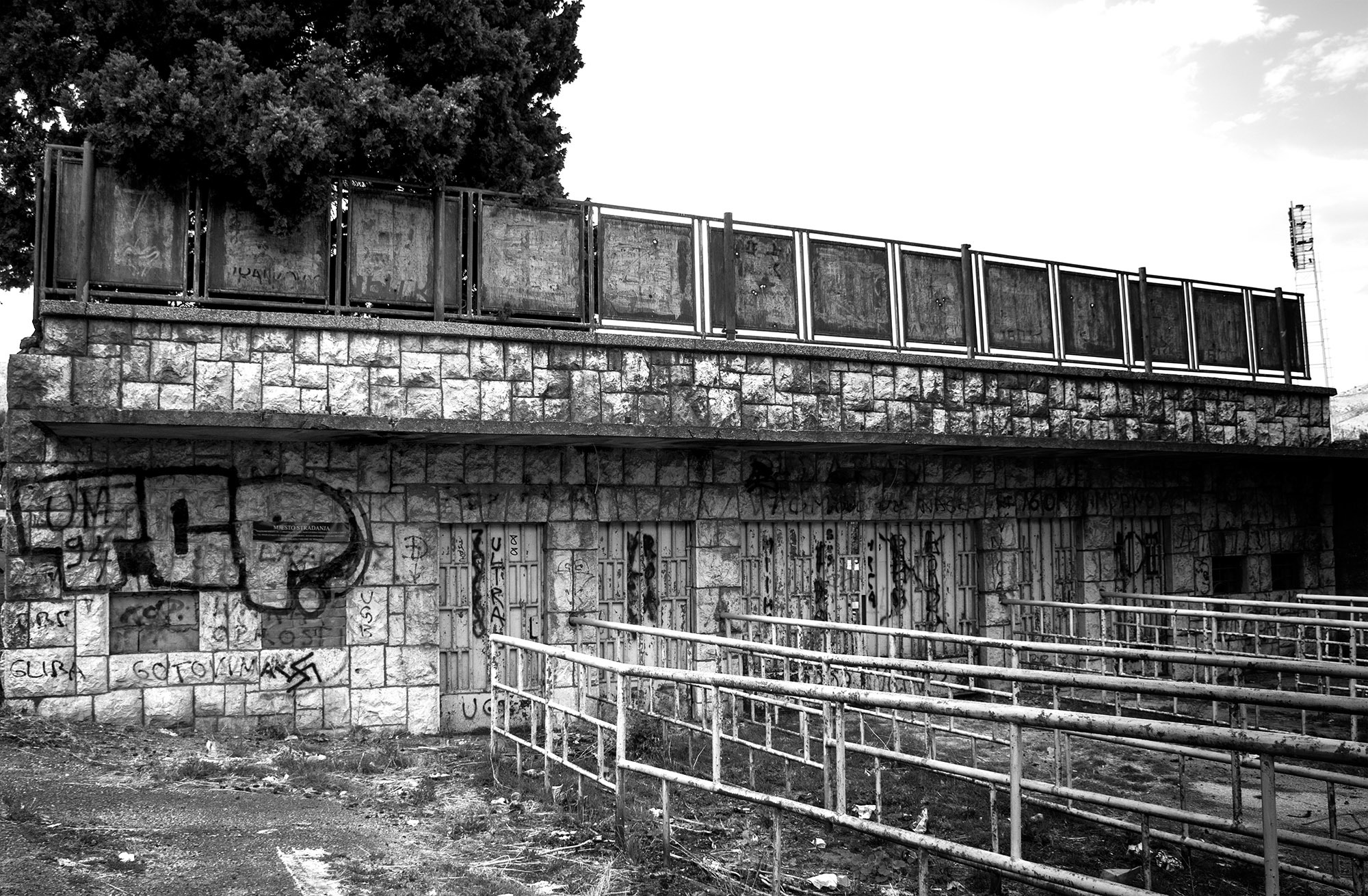
On the left bank of the Neretva river, in what was then a primary school building and is today the Mostar Municipal Court, in 1993 and 1994, units of ARBiH organised a prison facility for Croats. The prisoners were subjected to beatings and abuse, as well as forced labour. All three sites are still unmarked, and with the five sites we previously marked in Mostar, they show just how much the culture of memory in Mostar is fragmented and how important it would be to finally adopt a constructive approach to the past in this divided city.
A Dignified Memorial
The final site awaited us in Konjic where from 1992 to 1995, the Musala Sports Hall served as a detention facility for Serbs and Croats from the Konjic area. Prisoners were subjected to abuse, interrogations and inhumane conditions. This building is still waiting for a dignified memorial accounting for its past. Dragica Tomić from the Association for Killed, Missing and Deceased Croat Defenders helped us mark the sites in Konjic. She expressed her hope that the initiative to mark this building would reach the municipal authorities responsible for memorialisation.
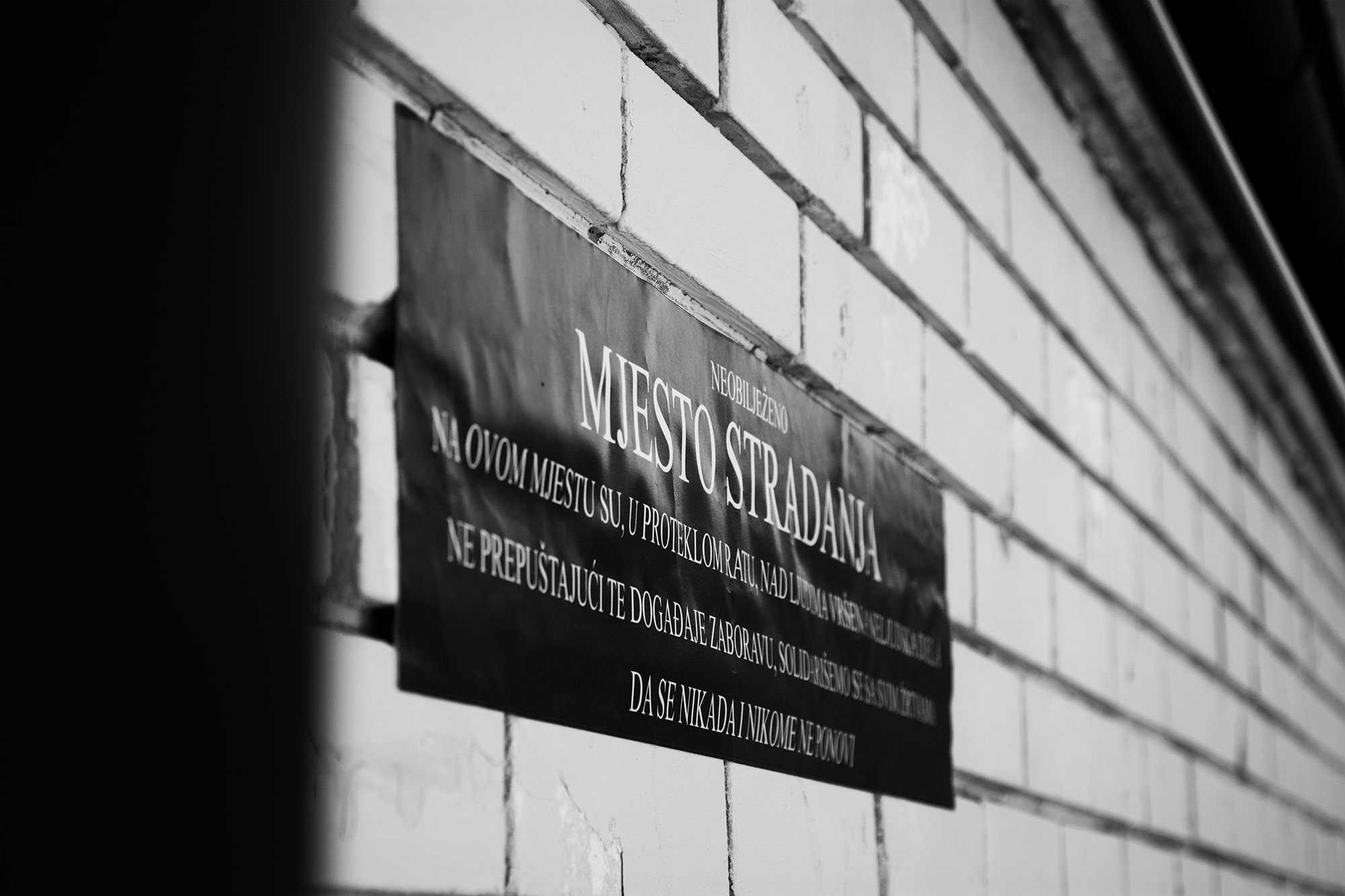
With this action, we reached a total of 76 marked sites of suffering. Although our activities encourage a different public discourse on the events at these sites, and though we have criss-crossed the whole of BiH with our actions, we are still a long way from constructively developing a culture of memory in BiH. Imaginary full lines still dictate how things will be memorialised and memorialisation almost always takes place within dominant national confines. I feel that we need more crossings of these full lines, however transgressive, because I’m afraid that in the present circumstances we will have to wait for a long time for the powers that be to create openings.